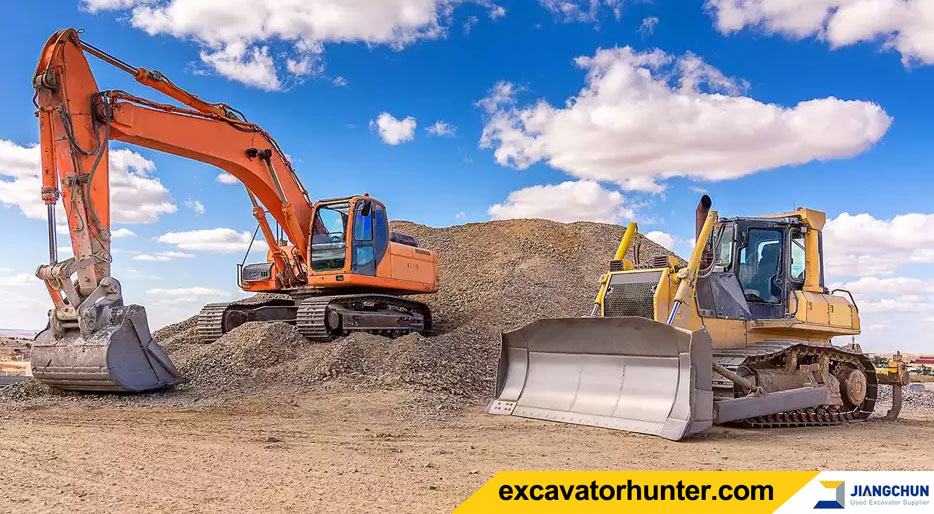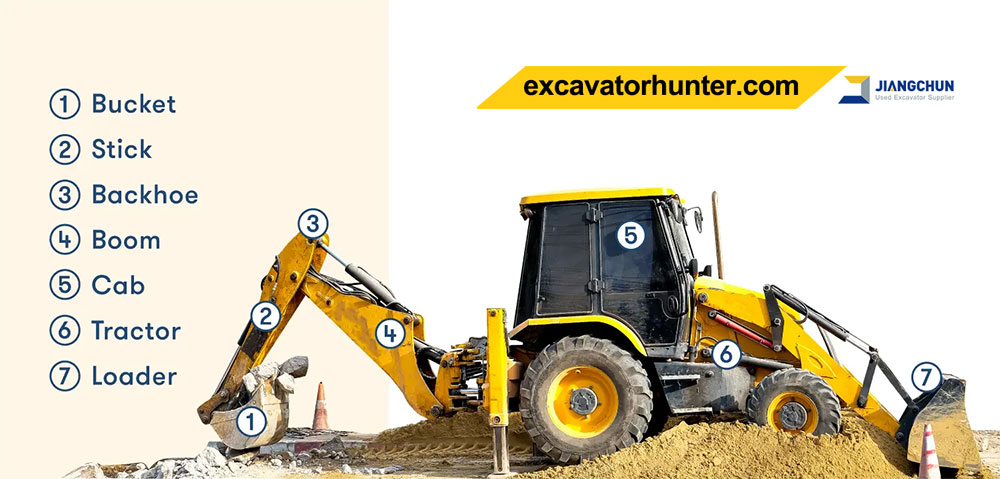When it comes to choosing between a backhoe and an excavator for a project, it largely depends on the specific requirements of the job. Here are some general differences between the two machines:
- Functionality: A backhoe is a versatile machine that can be used for digging, lifting, and moving materials. An excavator, on the other hand, is primarily designed for digging and demolition.
- Digging depth: Backhoes generally have a shallower digging depth compared to excavators, making them better suited for smaller excavation projects.
- Maneuverability: Backhoes are more maneuverable than excavators, making them a better choice for jobs that require the machine to move around tight spaces.
- Size: Excavators are generally larger and heavier than backhoes, making them better suited for larger-scale projects that require more power and reach.
- Cost: Backhoes are typically less expensive than excavators, making them a better option for smaller projects or when working with a tight budget.
Ultimately, the choice between a backhoe and an excavator comes down to the specific needs of the job. It's important to consider factors such as project size, digging depth, maneuverability, and budget when deciding which machine to use.
Though it’s sometimes difficult to tell the difference between a backhoe and an excavator, they differ in three main ways: size, versatility and rotation. These factors make each machine suited for different jobs, so it’s important to choose the right one for your project.

Size
The main difference between the two machines is size — excavators are larger and heavier, while backhoes are slightly smaller. The excavator is typically a better fit for demolition projects, mining, driving piles, drilling shafts for rock blasting and overall large-scale industrial projects. The backhoe, as the smaller and more adaptable of the two, is better for farming, snow removal, loading jobs, and medium-scale construction and excavation projects.
Versatility
When it comes to the excavator vs. the backhoe, versatility is also a differentiating factor. Though both machines offer a number of attachment options, the backhoe has a much greater selection and is therefore capable of a wider variety of tasks. One benefit of backhoes is that they can be driven on roads, which makes them the better choice for projects with spread-out worksites.
Rotation
Finally, backhoes and excavators have different rotation ranges which make them very different machines from an operator’s standpoint. An excavator operator can rotate the entire machine’s chassis and arm together in a complete circle, while a backhoe’s arm only pivots across a range of about 200 degrees.
The best way to determine which machine is right for your project is to learn the ins and outs of each.
What Is a Backhoe?

A backhoe is an excavation machine comprised of a standard tractor base that supports a digging bucket on the end of a jointed two-part arm. The opposite side of the backhoe will often have a front loader attachment (in which case the backhoe is technically called a “backhoe loader”), so the seat swivels 360 degrees to allow the operator to face whichever side is being used at the time.
The part of the backhoe arm that’s attached to the tractor is called the boom, and the segment that holds the digger bucket is called the dipper or dipper-stick. The pivot that connects the boom and dipper is called the king-post. There is a wide variety of attachments available for a backhoe also be replaced with different brooms, plows and forklifts. In some cases, a backhoe can even serve as a crane by looping the straps of a lifted object over the dipper stick.
The term “backhoe” can be confusing because the digging bucket is actually on the front of the machine. But the backhoe’s name actually refers to the way that the machine digs by pulling earth toward itself, or backward, rather than pushing it forward like a traditional shovel.
Which One Makes More Sense for Your Project?
There are a few factors to consider when determining whether a backhoe or excavator is the best fit for your project.
Size
The size of your machine should match the scale of your project. If you’re working on a large-scale construction, excavation or demolition project where sheer machine power is important, you’re likely better served by an excavator. If your project is more moderate in scope, you might consider using a backhoe.
Mobility
One advantage of the backhoe is that it can travel easily across a job site and even drive up to 25 mph on roads. If your project is spread apart and you need to complete tasks in different areas, you’ll have an easier time using a backhoe.
Task Specificity
Some tasks, like digging, can be done using a backhoe or excavator, but there are others that are really only possible for one machine or the other. Evaluate the specific tasks and attachments you foresee needing on your project and make sure the equipment you choose is capable.
Backhoe vs. Excavator FAQs
Still have questions about the differences between backhoes and excavators? Here are the answers to some of the most commonly asked questions.
Can You Excavate With a Backhoe?
Yes, backhoes can be used for excavating or digging projects. One thing to remember is that backhoes are typically best suited for small to moderate size projects, like digging a residential basement. Excavators are best for heavy-duty projects like mining or large-scale construction.
What Is the Difference Between Backhoe and Excavator Controls?
When it comes to a backhoe vs. an excavator, controls can be a common point of confusion. Backhoes typically use two operating systems: pilot control or lever control. Pilot control only uses buttons to maneuver the machine. Lever control uses two side levers that can be pushed forward, backward or side to side to control the backhoe. On the other hand, excavators usually only use levers to control the machine.
Do I Need an Excavator or a Backhoe?
In general, excavators are better suited for heavy-duty projects like major construction, and backhoes are better for moderately sized projects like farmwork. The following table breaks down recommendations based on common scenarios.
| Backhoe | Excavator |
| Small to moderate size projects | Large or heavy-duty projects |
| Farming | Demolition |
| Snow removal | Mining |
| Loading jobs | Driving Piles |
| Spread-out worksites | Drilling shafts for rock blasting |
| Residential basements | Dredging rivers |
| Uprooting trees | Trenching |

 CHATING
CHATING CALL
CALL USED
USED CASES
CASES